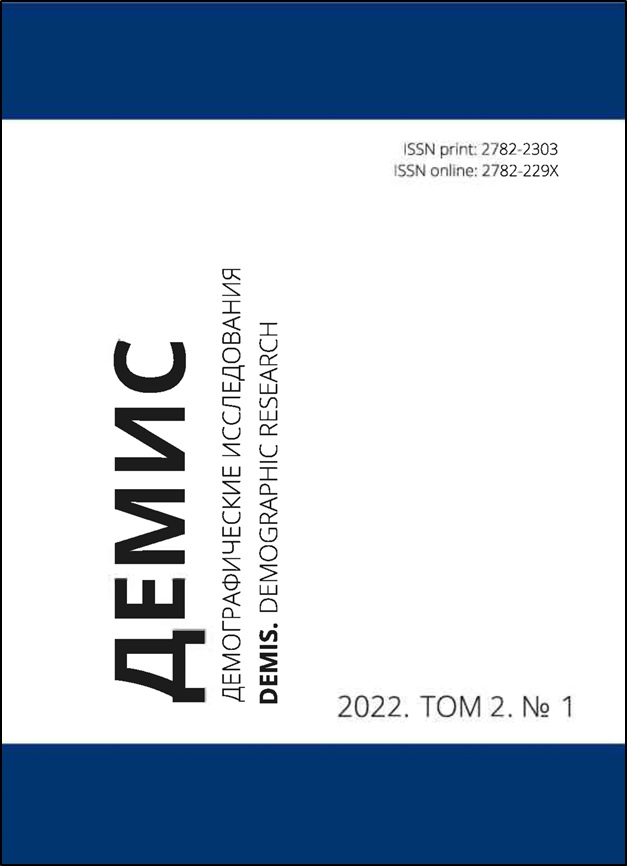Социально-экономические последствия возвратной миграции вьетнамцев из Японии
Научная статья
Аннотация
Литература
2. Hoang Anh Tuan. The Impact of International Migration and Remittances on Household Income in Vietnam: An Analysis of the Application of a New Data Set on “Vietnam Household Survey on International Migration in 2009”. Journal of Human and Socio-Environmental Studies. 2019. Vol. 37. No 3. Pp. 37–54. DOI: https://doi.org/10.24517/00054187.
3. Co C. Y., Gang I. N., Yun M.-S. Returns to Returning. Journal of Population Economics. 2000. Vol. 13. No. 1. Pp. 57–79. DOI: https://doi.org/10.1007/s001480050123.
4. Dustmann C., Weiss, Y. Return Migration: Theory and Empirical Evidence from the UK. British Journal of Industrial Relations. 2007. Vol. 45. No. 2. Pp. 236–256. DOI: https://doi.org/10.1111/j.1467-8543.2007.00613.x.
5. Sjaastad L. A. The Costs and Returns of Human Migration. Journal of Political Economy. 1962. Vol. 70. No. 5. Pp. 80–93. DOI: https://doi.org/10.1086/258726.
6. Weeks J. R. Population: An Introduction to Concepts and Issues. Belmont: Wadsworth Publishing Company, 2008. 610 p. ISBN: 0-495-09637-7.
7. International Organization for Migration. International Migration Law No. 34. Glossary on Migration. Geneva: International Organization for Migration, 2019. 236 p. ISSN: 1813-2278.
8. Todaro M. P. A Model of Labor Migration and Urban Unemployment in Less Developed Countries. The American Economic Review. 1969. Vol. 59. No. 1. Pp. 138–148.
9. Cassarino J. P. Theorising Return Migration: The Conceptual Approach to Return Migrants Revisited. International Journal on Multicultural Societies. 2004. Vol. 6. No. 2. Pp. 253–279.
10. Smith A. The Wealth of Nations. California: Createspace, 2018. 524 p. ISBN: 1505577128.
11. Ravenstein E. G. The Laws of Migration. Journal of the Royal Statistical Society. 1889. Vol. 52. No. 2. Pp. 241–305. DOI: https://doi.org/10.2307/2979333.
12. Hicks J. R. The Theory of Wages. London: Palgrave Macmillan, 2017. 388 p. ISBN: 978-1-349-00191-0. DOI: https://doi.org/10.1007/978-1-349-00189-7.
13. Zimmermann K. F. European Migration: Push and Pull. International Regional Science Review. 1996. Vol. 19. No. 1–2. Pp. 95–128. DOI: https://doi.org/10.1177/016001769601900211.
14. United Nations Economic and Social Commission for Asia and the Pacific (UNESCAP). Migration Patterns and Policies in the Asian and Pacific Region. New York: United Nations, 2003. 95 p. ISBN: 9211203309.
15. Bröcker J., Herrmann H. Spatial Change and Interregional Flows in the Integrating Europe. Berlin: Physica-Verlag Heidelberg, 2001. 270 p. ISBN: 978-3-7908-1344-9.
16. Katz E., Stark O. Labor Migration and Risk Aversion in Less Developed Countries. Journal of Labor Economics. 1986. Vol. 4. No. 1. Pp. 134–149. DOI: https://doi.org/10.1086/298097.
17. Zelinsky W. The Hypothesis of the Mobility Transition. Geographical Review. 1971. Vol. 61. No. 2. Pp. 219–49. DOI: https://doi.org/10.2307/213996.
18. Haas H. de. Migration and Development: A Theoretical Perspective. International Migration Review. 2010. Vol. 44. No. 1. Pp. 227–64. DOI: https://doi.org/10.1111/j.1747-7379.2009.00804.x.
19. Conley J. P., Konishi H. Migration-Proof Tiebout Equilibrium: Existence and Asymptotic Efficiency. Journal of Public Economics. 2002. Pp. 243–262. DOI: https://doi.org/10.1016/S0047-2727(01)00082-2.
20. Stark O. The Migration of Labor. Hoboken: Blackwell Publishing, 1991. 406 p. ISBN: 1557860300.
21. Jeffery L., Murison J. The Temporal, Social, Spatial, and Legal Dimensions of Return and Onward Migration. Population, Space Place. 2011. Vol. 17. No. 2. Pp. 131–139. DOI: https://doi.org/10.1002/psp.606.
22. Mesnard A. Temporary Migration and Capital Market Imperfections. Oxford Economic Papers. 2004. Vol. 56. No. 2. Pp. 242–262. DOI: https://doi.org/10.1093/oep/gpf042.
23. Ammassari S., Black R. Harnessing the Potential of Migration and Return to Promote Development. Geneva: International Organization for Migration, 2001. 58 p. ISBN: 9789213629970. DOI: https://doi.org/10.18356/e702d9a1-en.
24. Ferro A., Fullin G., Fellini I., Hunger U. The Political Economy of Labour Migration in the European Construction Sector. IMIS-Beiträge. 2004. No. 25. Pp. 179–200.
25. Wilson F. D. Migration and Occupational Mobility: A Research Note. International Migration Review. 1985. Vol. 19. No. 2. Pp. 278–292. DOI: https://doi.org/10.1177/019791838501900204.
26. Ardovino M., Brown M. A Brief Literature Review on the Impact of Circular Migration: Brain Gain, Social Capital and Transnational Networks on International Development. Washington: US Agency for International Development, 2008. 16 p.
27. Gmelch G. Return Migration. Annual Review of Anthropology. 1980. Vol. 9. Pp. 135–159. DOI: https://doi.org/10.1146/annurev.an.09.100180.001031.
Поступила: 15.11.2021
Опубликована: 28.02.2022






